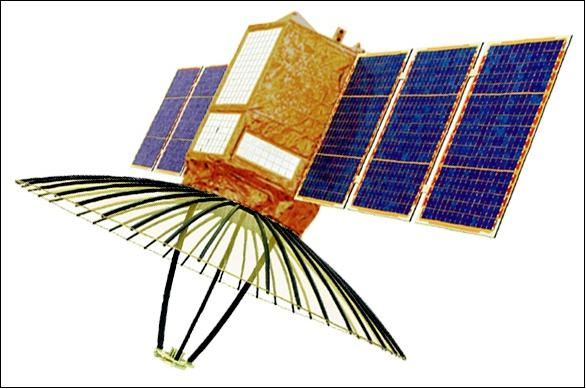Important Facts For Prelims
RISAT-2
- 05 Nov 2022
- 3 min read
Why in News?
Recently, the Indian Space Research Organisation’s (ISRO) RISAT (Radar Imaging Satellite)-2 satellite has made an uncontrolled re-entry into the Earth’s atmosphere at the predicted impact point in the Indian Ocean near Jakarta.
- RISAT-2 is India’s first "eye in the sky" which keep surveillance on the country’s borders as part of anti-infiltration and anti-terrorist operations.
What is RISAT-2?
- About:
- The principal sensor of Risat-2, considered a ‘spy’ satellite, was an X-band synthetic-aperture radar from Israel Aerospace Industries.
- Risat-2 was built more quickly following the 2008 Mumbai terror attacks due to delay with the indigenously developed C-band for Risat-1 satellite. The satellite, which was India's first dedicated reconnaissance satellite, possessed day-night as well as all-weather monitoring capability.
- It was also used to track hostile ships at sea that were deemed a military threat.
- Launch:
- Risat-2, weighing about 300 kg was launched on April 20, 2009, by the PSLV-C12 launch vehicle.
- Significance:
- Risat-2 provided beneficial payload data for over 13 years.
- Since its injection, Risat-2’s radar payload services were provided for various space applications.
- Risat-2 is a clear example of ISRO’s capability to carry out spacecraft orbital operations in an efficient and optimal way.
- As Risat-2 re-entered within 13.5 years, it complied with all necessary international mitigation guidelines for space debris, showing the space agency’s commitment towards the long-term sustainability of outer space.
- Risat-2 provided beneficial payload data for over 13 years.
What are the Upcoming Projects of ISRO?
- Gaganyaan: Indian Human Spaceflight Programme.
- Aditya-L1: To Study the Sun’s atmosphere.
- NASA-ISRO Synthetic Aperture Radar Mission: To study hazards and global environmental change.
- Shukrayaan-1: Orbiter to Venus.
UPSC Civil Services Examination, Previous Year Question (PYQ)
Q. With reference to India’s satellite launch vehicles, consider the following statements: (2018)
- PSLVs launch the satellites useful for Earth resources monitoring whereas GSLVs are designed mainly to launch communication satellites.
- Satellites launched by PSLV appear to remain permanently fixed in the same position in the sky, as viewed from a particular location on Earth.
- GSLV Mk III is a four-staged launch vehicle with the first and third stages using solid rocket motors, and the second and fourth stages using liquid rocket engines.
Which of the statements given above is/are correct?
(a) 1 only
(b) 2 and 3
(c) 1 and 2
(d) 3 only
Ans: (a)
Source: TH







